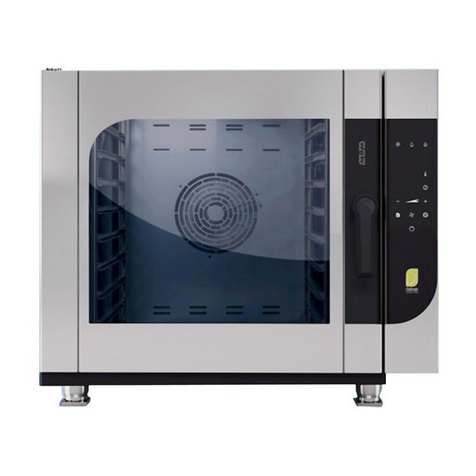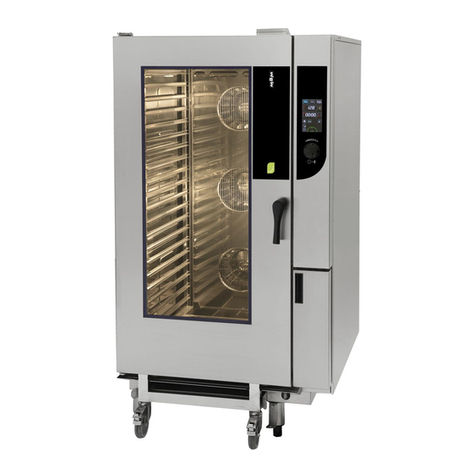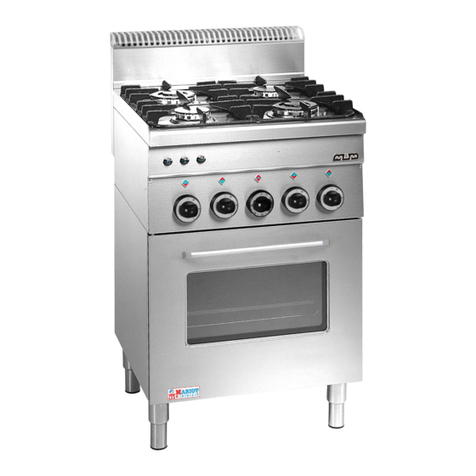
- 2 -
GB
SECTION DESCRIPTION PAGE
CONTENTS
Warnings.............................................................................................................................................. 3
1. Technical data .................................................................................................................................... 4
1.1 Table I:Technical data......................................................................................................................... 4
2. Installation instructions ................................................................................................................... 5
2.1 Data plate ............................................................................................................................................ 5
2.2 Preparing for installation .................................................................................................................... 5
2.2.1 Laws, regulations and technical directives ........................................................................................ 5
2.3 Positioning.......................................................................................................................................... 5
2.4 Cold water connection (softened) ...................................................................................................... 6
2.5 Waste water outlet ............................................................................................................................... 6
2.6 Electrical connection .......................................................................................................................... 7
2.6.1 Earthing............................................................................................................................................... 7
2.6.2 Equipotential system .......................................................................................................................... 7
2.6.3 Connections to the different electrical networks ............................................................................... 7
2.6.4 Power supply cable ............................................................................................................................. 8
2.6.5 Electric connection of the cable to the terminal board...................................................................... 8
2.7 Other outlets........................................................................................................................................ 8
2.8 Room ventilation................................................................................................................................8
2.9 Introduzione del forno all’utente ....................................................................................................... 8
2.10 Grill assembly ..................................................................................................................................... 9
3. Userinstructions ................................................................................................................................ 10
3.1 Commissioning................................................................................................................................... 10
3.2 Panel presentation............................................................................................................................... 11
4. Using and programming the electronic oven.................................................................................. 12
4.1 Turning the control panel on and off.................................................................................................. 12
4.2 Description of the main keys on the control panel ............................................................................12
4.3 Using the control panel....................................................................................................................... 13
4.3.1 Setting the time ................................................................................................................................... 13
4.3.2 Selecting the baking type................................................................................................................... 13
4.3.3 Display and modification of the baking parameters ..........................................................................14
4.4 Display and special adjustments ........................................................................................................ 14
4.4.1 Relief valve ......................................................................................................................................... 14
4.4.2 Humidifier ........................................................................................................................................... 14
4.4.3 Core probe........................................................................................................................................... 15
4.4.4 Delta t function (DT).......................................................................................................................... 15
4.4.5 Cooling the baking area ..................................................................................................................... 15
4.4.6 Delayed turning on of the oven.......................................................................................................... 15
4.5 Automatic operation: programming................................................................................................... 16
4.5.1 Creating a program.............................................................................................................................. 16
4.5.2 Executing a program........................................................................................................................... 16
4.5.3 Displaying a program.......................................................................................................................... 16
4.5.4 Editing a program ............................................................................................................................... 16
4.5.5 Associating a text with the program no.: ........................................................................................... 17
4.5.6 Copying a program ............................................................................................................................. 17
4.6 Turning the oven off ........................................................................................................................... 17
4.7 Special operations............................................................................................................................... 18
4.7.1 Filling the steam generator ................................................................................................................. 18
4.7.2 Lighting of the baking area ................................................................................................................ 18































